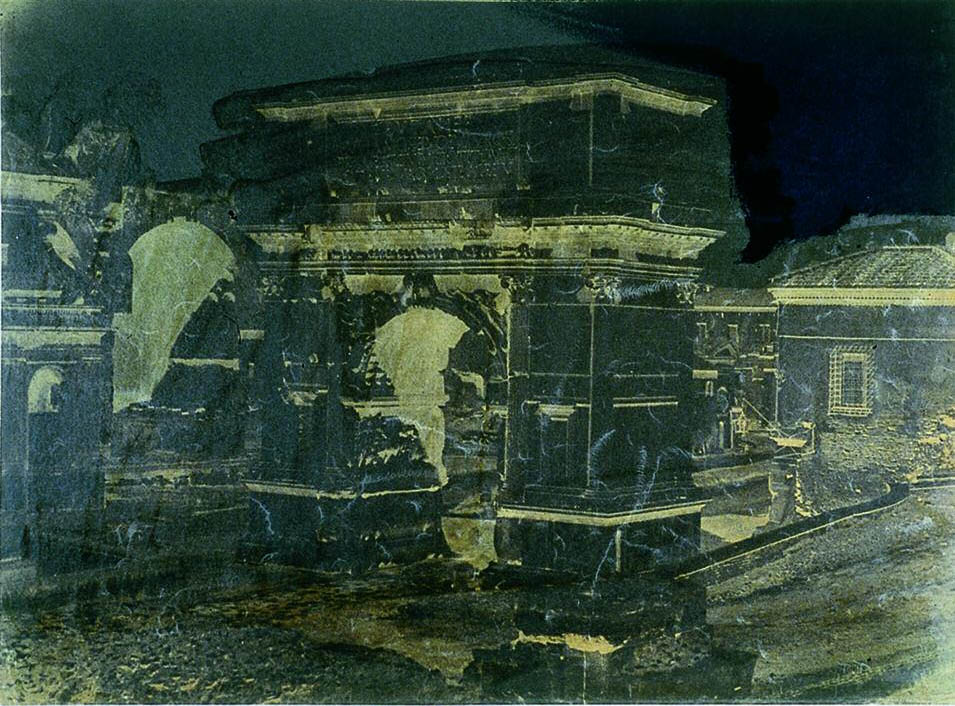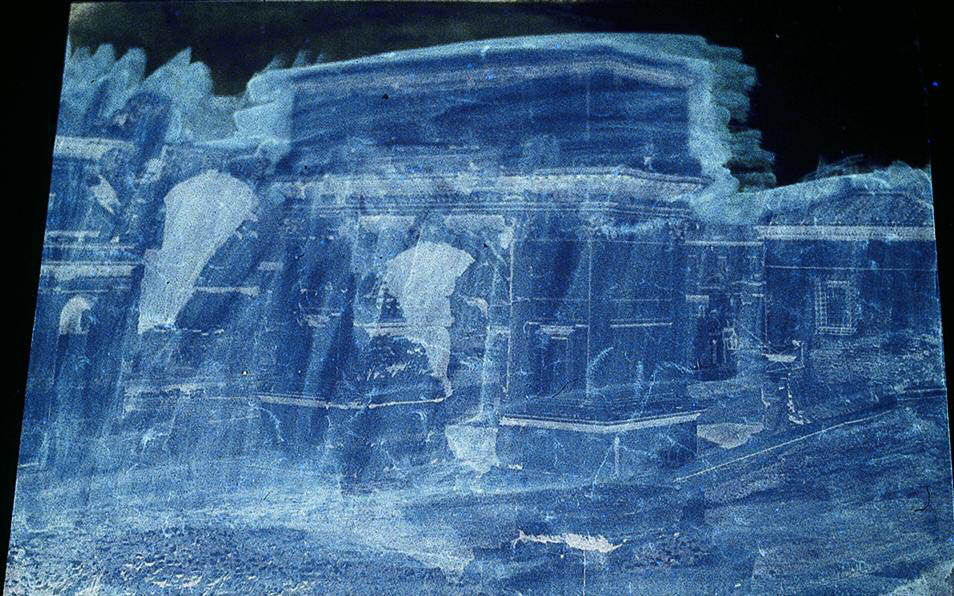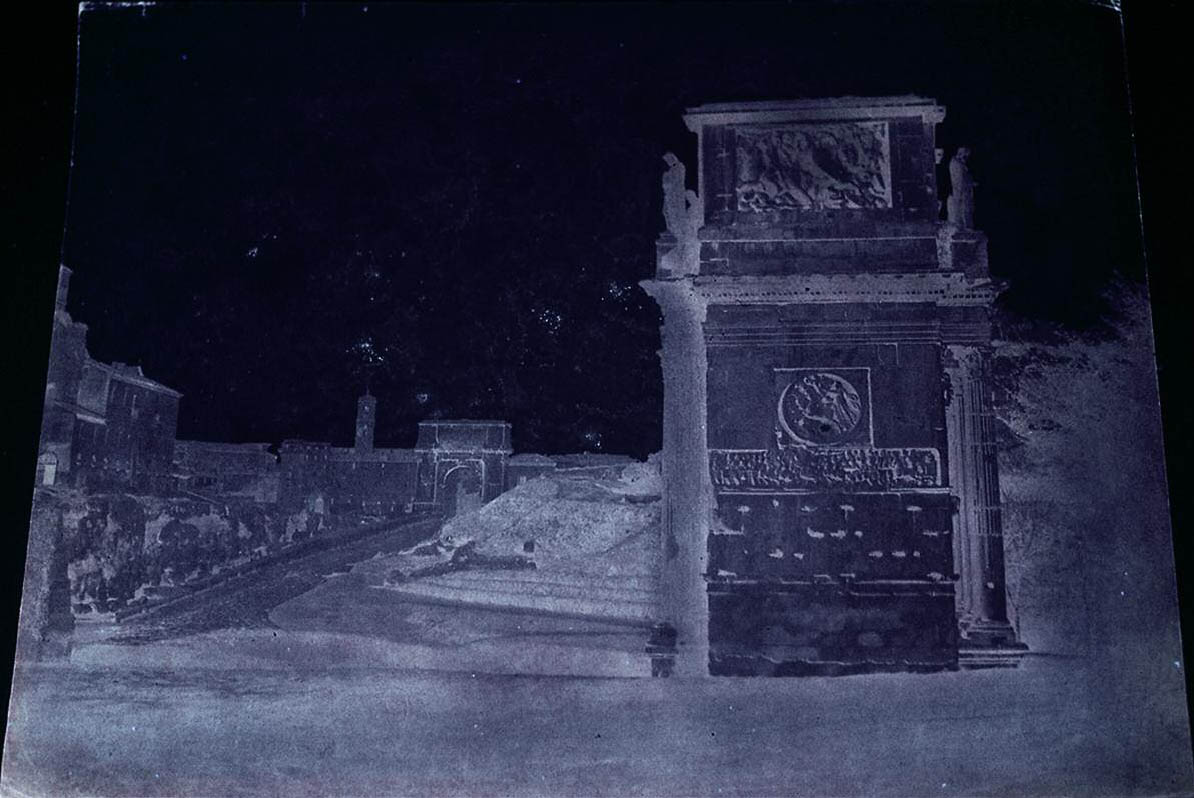“A TRANSPARENT ATMOSPHERE”: THE PAPER NEGATIVES OF FR�D�RIC FLACH�RON IN THE HARRISON D. HORBLIT COLLECTIONLEE ANN DAFFNER
2 CONDITION OF THE FLACH�RON NEGATIVESThis group of early photographic artifacts is extraordinary: strong, clear compositions produced with confidence using beautiful materials. The small-format negatives date from 1849 to 1850, and the large-format negatives are dated from 1850 to 1853 as well as being inscribed with a number. Overall the Flach�ron negatives are in very good condition, despite inherent fragility. Throughout the group, the image silver is neutral colored and appears stable. Flach�ron consistently employed the highest-quality Whatman paper for his negatives, and despite wear and tear from handling, the sheets have survived intact and in fact retain some of their original flexibility. Craquelure was observed in the gouache retouch media, although active flaking was not noted.
Visual inspection of the four negatives showed that the resinous coating was selectively applied to the negative: brush strokes outline the building forms but do not cover the surface completely. The thickness varies considerably from area to area, and a distinct cracking pattern from handling dents suggests the layer is brittle. All of the Flach�ron negatives were examined under long-wave ultraviolet light. A visible fluorescence from ultraviolet excitation at certain wave-lengths is characteristic of specific substances, and long-wave ultraviolet radiation is frequently used, for example, in paintings conservation, to help distinguish overpaint from original paint or to ascertain the presence of natural resin varnishes or shellac. Four of the negatives examined under ultraviolet light showed a very strong, telltale, greenish auto-fluorescence typically associated with natural resin varnish. These were the same four negatives with coatings visible under normal illumination (fig. 10, see page 447). No other negative examined showed fluorescence (fig. 11, see page 448).
While many of the photographic journals and manuals from this period of photography suggest that beeswax was the preferred transparentizing agent, other materials were available to and utilized by the photographers, such as oil, other waxes such as paraffin wax, gums, and resins (Blanch�re 1865). Beeswax has long been known for its chemical stability, due to its fully saturated long chain polymer components and the stability of the ester linkage. However, the addition of resins and gums, a practice historically associated with wax working, is of significance to the natural aging of these artifacts (Mills and White 1977). |



